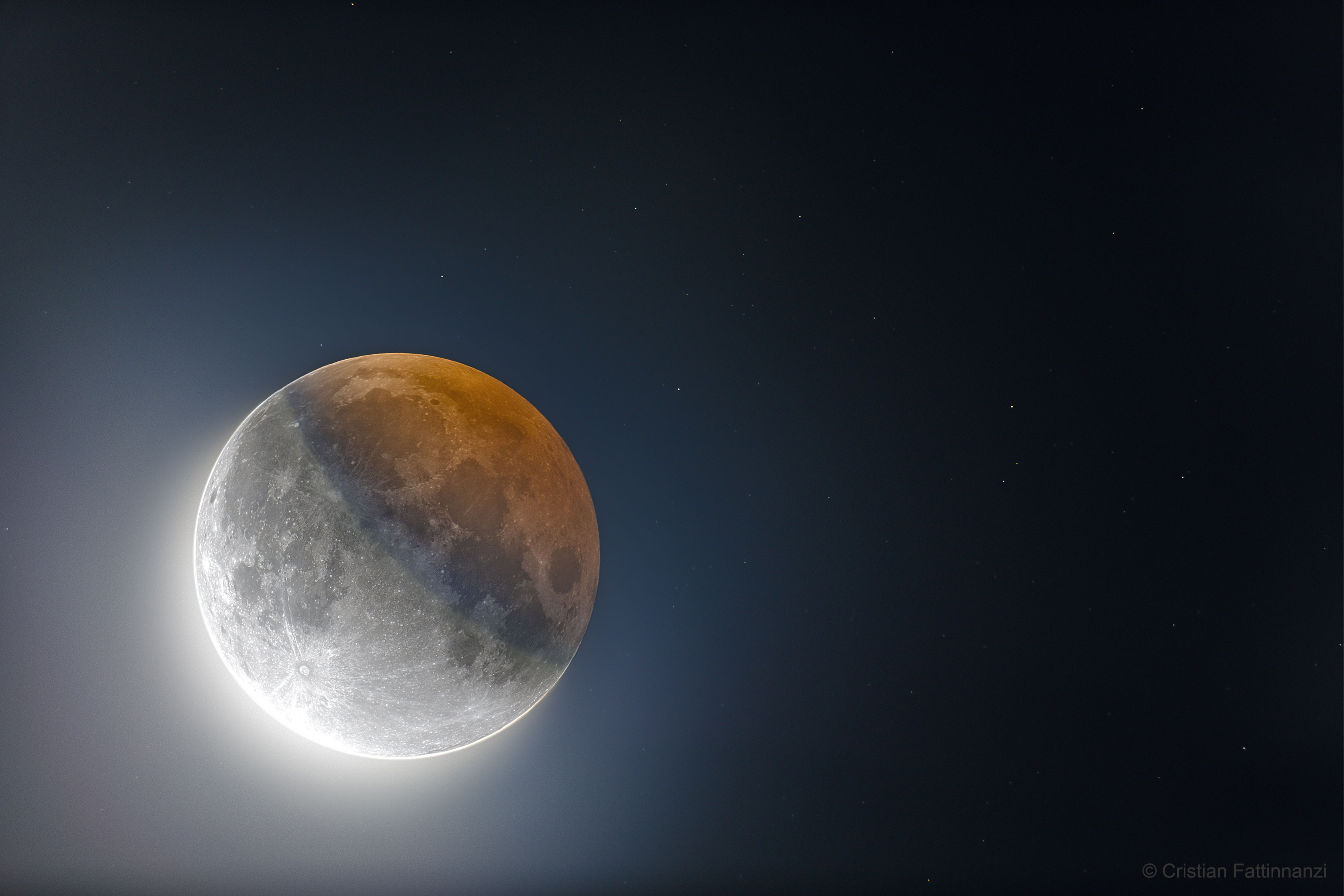2019 July 22
HDR: Earth’s Circular Shadow on the Moon
Image Credit & Copyright: Cristian Fattinnanzi
Explanation: What could create such a large circular shadow on the Moon? The Earth. Last week’s full Moon — the Buck Moon — was so full that it fell almost exactly in a line with the Sun and the Earth. When that happens the Earth casts its shadow onto the Moon. The circularity of the Earth’s shadow on the Moon was commented on by Aristotle and so has been noticed since at least the 4th century BC. What’s new is humanity’s ability to record this shadow with such high dynamic range (HDR). The featured HDR composite of last week’s partial lunar eclipse combines 15 images and include an exposure as short as 1/400th of a second — so as not to overexpose the brightest part — and an exposure that lasted five seconds — to bring up the dimmest part. This dimmest part — inside Earth’s umbra — is not completely dark because some light is refracted through the Earth’s atmosphere onto the Moon. A total lunar eclipse will occur next in 2021 May.
HDR影像:月球上的圆形地球阴影
影像来源与版权: Cristian Fattinnanzi
说明:什么能在月球上形成如此庞大的圆形影子?是我们美丽的地球。上星期满相的雄鹿月极为盈满,这是因为它和太阳与地球几乎连成一直线。当这种状况出现时,地球的影子就会落在月亮上头。远在西元前4世纪时,亚里士多德就曾评论过地球落在月球的影子非常圆,而从此就成为众所周知的现象。因此较新奇的,是人类如今有能力用高动态范围成像(HDR)来记录地球的影子。这幅记录上星期月偏食的组合高动态范围影像,结合了15张照片,其中一幅的曝光时间短到1/400秒,让最亮的区域不至于过曝,另有一幅5秒长曝光照片,以解析最暗的区域。这个位在地球本影内的最暗区域,在地球大气 折射的阳光照耀月表下,并非完全黝黑。在2021年的5月,将可见到另一个月全食事件。







